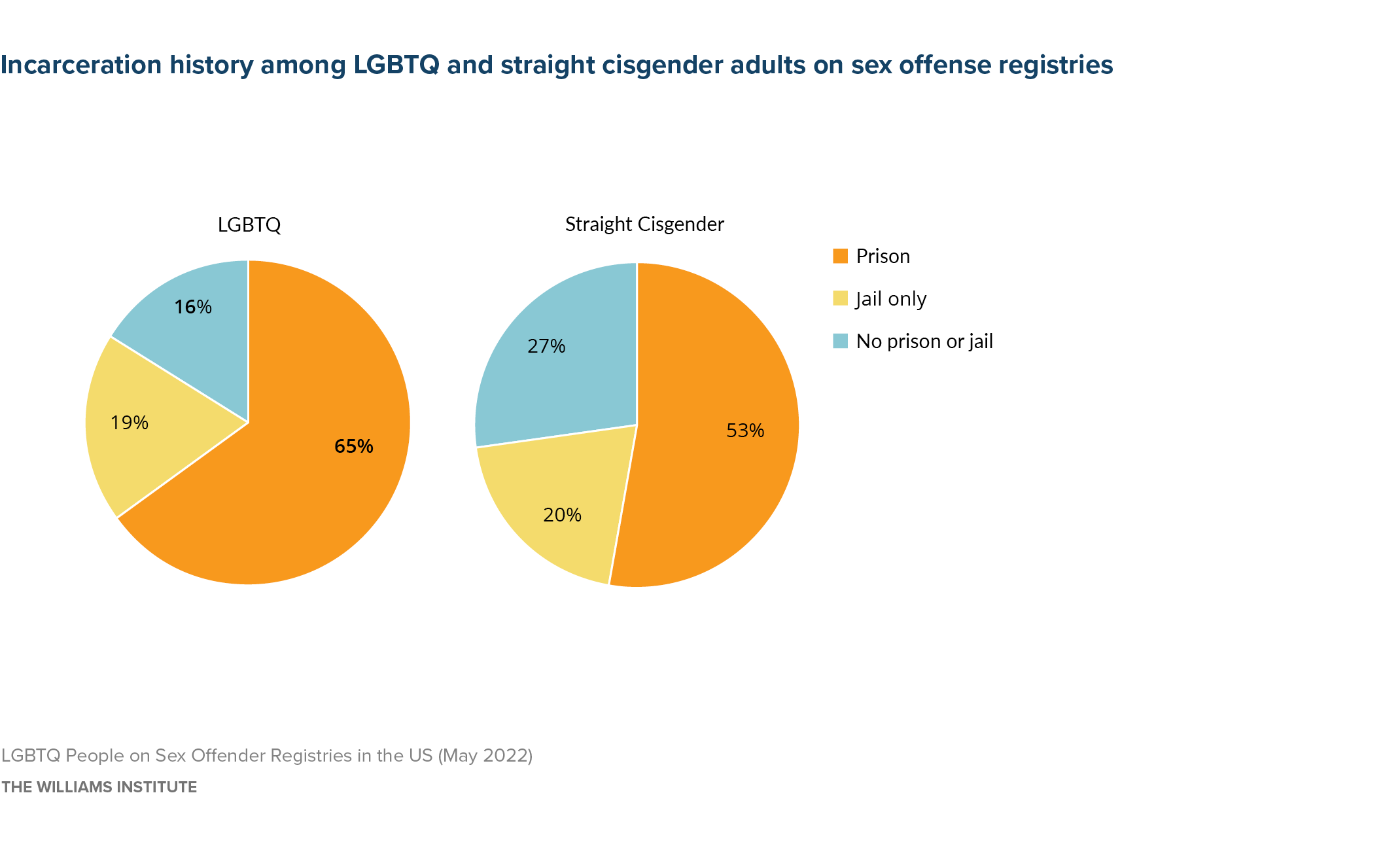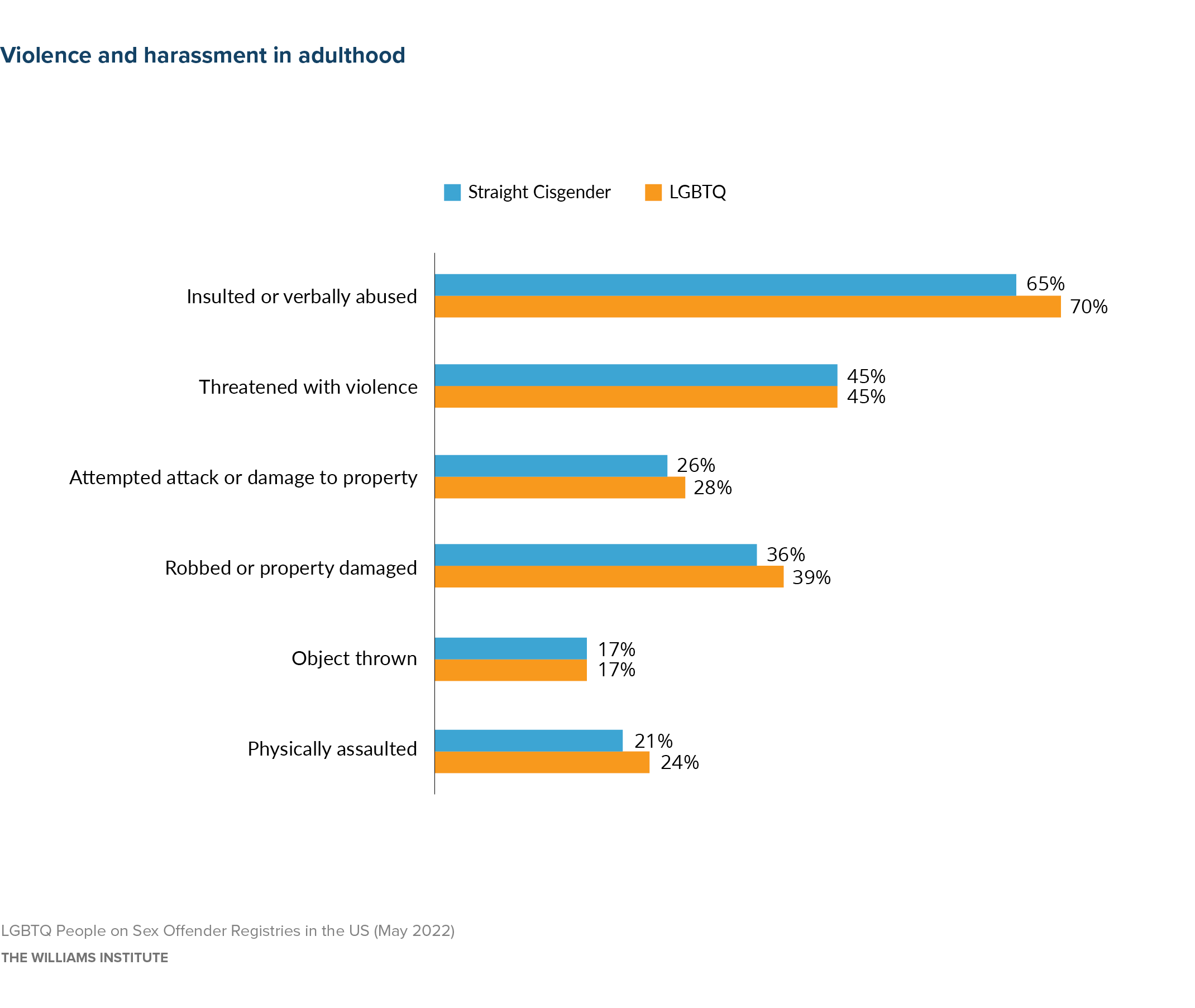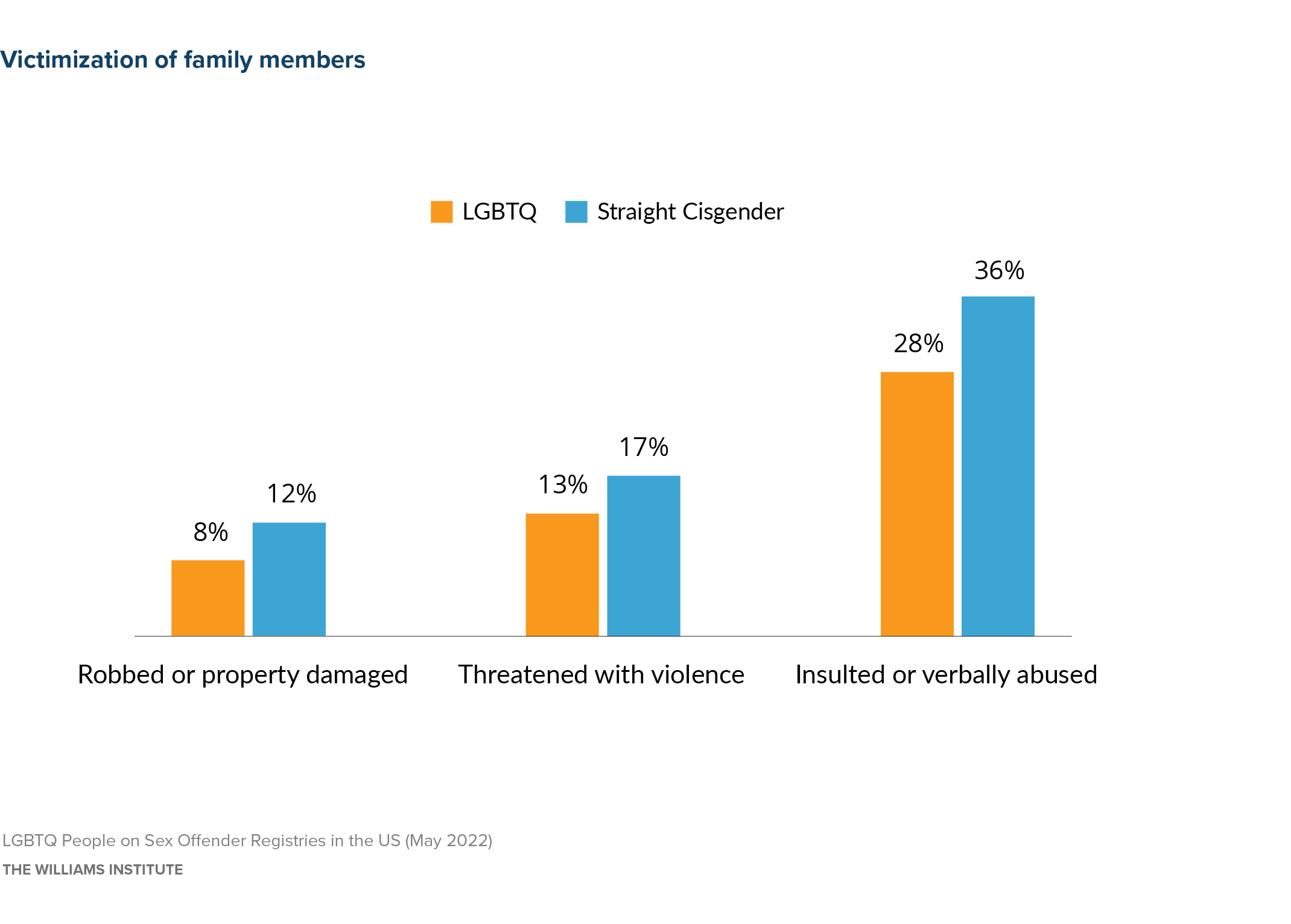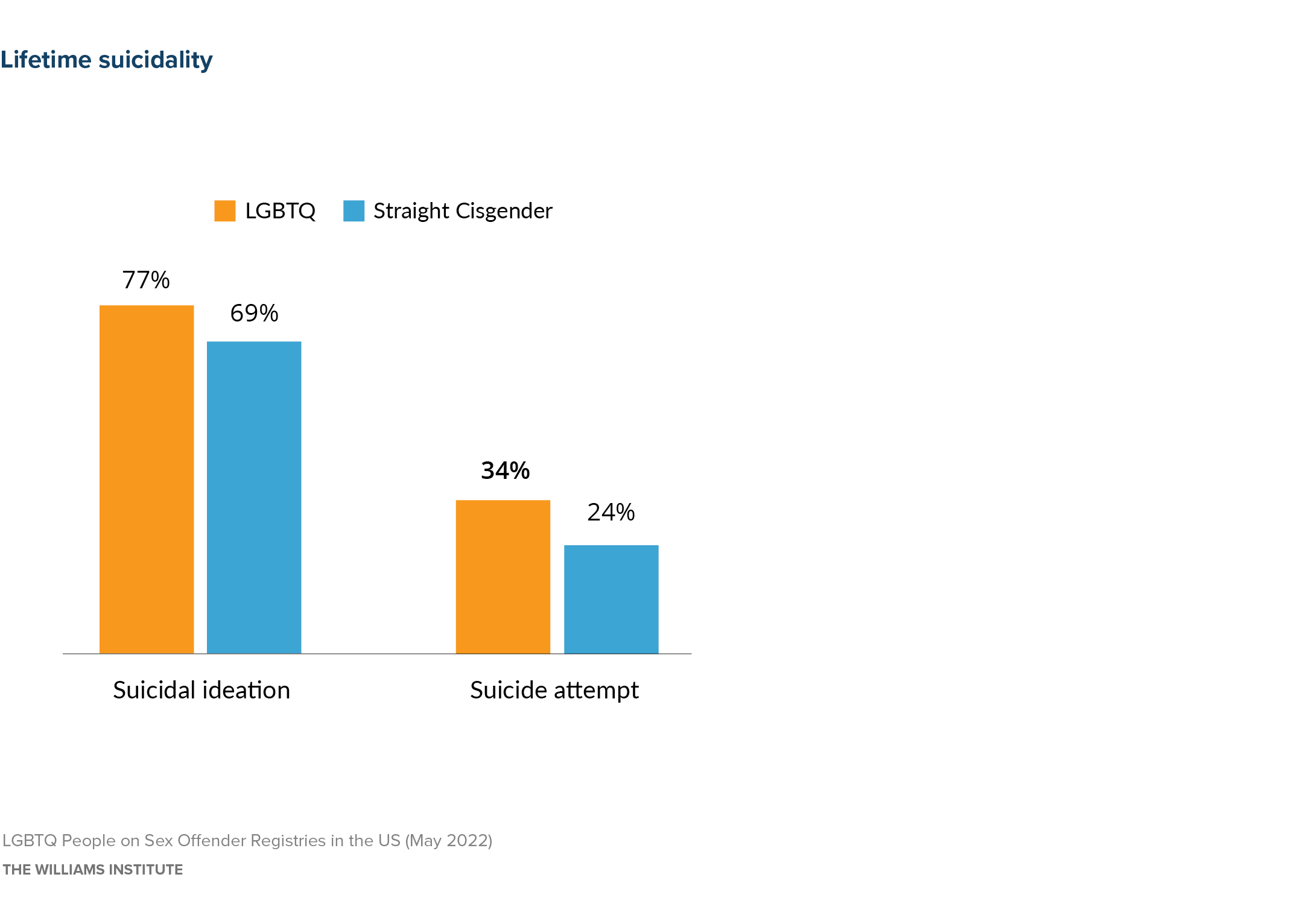Executive Summary
Laws requiring registration of individuals convicted of sexual offenses have been controversial since their inception. Although offender management practices have been part of U.S. history for many decades, legislation has expanded the use and accessibility of sex offender registries across the country in recent decades, especially after some notorious cases of child abduction, sexual abuse, and homicide. Registration in general, and the expansion of registration and public notice in particular, arose from a purported attempt to increase safety by informing the public when people convicted of sex offenses live in the community. Yet registries, and the many rules and regulations that apply to registrants, have been criticized as hyper-punitive and largely ineffective.
The United States has the world’s largest prison population. Overall, mass incarceration disproportionately impacts people of color, people with disabilities, and the LGBTQ community. LGBTQ people are at increased risk for being targeted for sex crimes, as historical prejudice and stigma have depicted LGBTQ people—especially gay/bisexual men—as sexual predators. Despite this, little is known about LGBTQ people on sex offender registries in the United States.
In this project, we surveyed people who are required to register on sex offender registries (SOR). To date, there are no data on LGBTQ people on SOR. We conducted a national survey that was self-administered, anonymous, and completed online. One purpose of the survey was to identify people who are LGBTQ and straight/cisgender on U.S. SOR. In addition to general demographics, the survey included questions about the following: (a) the offenses that led to registration (what kinds of crimes); (b) the legal criminal process (went to trial vs. settled, served time in jail/prison, how long, etc.); (c) life on the registry, including what kinds of conditions the person must abide by; (d) the impact of registries, referred to in the literature as “collateral consequences,” including experiences of discrimination, violence, housing instability, and unemployment; and (e) mental health, physical health, and socioeconomic conditions (poverty, homelessness). Data were obtained through the SORS survey between 3/12/2020 and 11/29/2020.
Respondents also had a chance to write short narratives in response to some survey questions. Excerpts from narratives by LGBTQ respondents are included throughout the report.
_____________________________
My husband lives out of state, I cannot live with them, fear living in a halfway house because I am trans, and no apartment will take me because of my record, so I live in an extended stay hotel that costs almost as much as the mortgage on my husband’s home.
36-year-old, White/Hispanic, bisexual, transgender person
I have two advanced graduate degrees that I am no longer able to use because of my status. In addition, I have applied for over 900 jobs and when the background check is completed, I am turned down or rejected for the position. @ best I can only find entry level positions that pay minimum wage with no benefits.”
65-year-old, White, gay man
_____________________________
The report provides data on 964 respondents, with data presented for LGBTQ and straight cisgender individuals. Because of this, specific results for other groups, especially women and people of color, may become hidden due to aggregation of data where most respondents are men and White. In subsequent publications, we will focus on women and transgender persons and on racial/ethnic differences.
Findings
The average age among respondents was 51; 87% were White; and 20% identified as lesbian, gay, bisexual, queer/pansexual, and/or transgender (LGBTQ). Most respondents were men, with fewer LGBTQ respondents identifying as a man than straight cisgender respondents (92% vs. 97%); 0.7% of all respondents identified as transgender.
Interactions with the Criminal Justice System
- Almost all (90%) of the respondents had one sex offense conviction; 6% had an additional sex offense conviction following the first incident for which they were required to register. These estimates did not differ between LGBTQ and straight cisgender respondents. Nine percent of LGBTQ respondents had sodomy statutes included in their offense and 2% had a positive HIV diagnosis included in their offense as aggravating factors.
- Compared with straight cisgender adults, more LGBTQ adults had three or more victims (9% vs. 17%), and almost half of LGBTQ adults had victims that were an image, compared with less than one-quarter of straight cisgender adults. More straight cisgender adults had victims who were family members compared to LGBTQ adults (39% vs. 24%). One-third of both LGBTQ and straight cisgender adults had a victim who was under the age of 12.
- Respondents were asked about their interactions with the criminal justice system. Less than 10% of respondents had gone to trial: most respondents pleaded guilty or no contest, and about one-third were convicted of a reduced offense.
- More than half of respondents had been incarcerated in prison for their sex offense conviction, with more LGBTQ than straight cisgender adults incarcerated in prison (65% vs. 53%). Among those who had served prison or jail sentences, more LGBTQ than straight cisgender people reported sentences of 25 years or more (5% vs. 1.6%).



